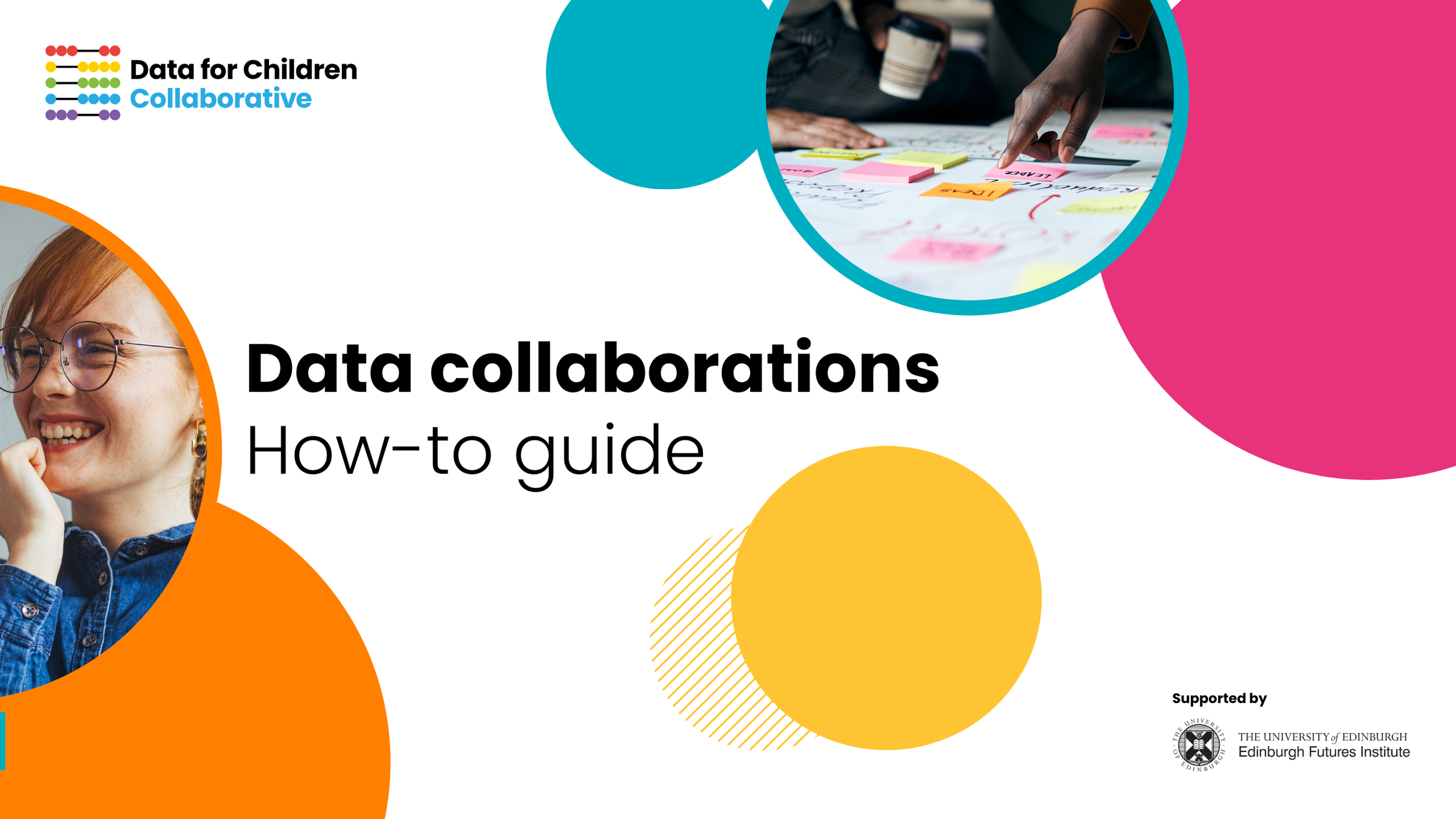Data for Children Collaborative Releases Data Collaborations How-to-Guide
The Data for Children Collaborative are excited to share a consolidation of 5 years of learning in one handy how-to-guide. Our ethos is to openly share tools, approaches and frameworks that may benefit others working in the Data for Good space. We have developed this guide specifically to support organisations working on complex challenges that may have data-driven solutions. The How-to-Guide provides advice and examples of how to plan and execute collaboration on a data project effectively.
Deputy Director Fraser Macdonald said:
"At the Data for Children Collaborative, we believe in the power of data collaborations in addressing society's wicked problems. We have seen the impact of organisations coming together to work in a truly transdisciplinary and responsible way, driven by a desire to solve a challenge and create a lasting positive change.
We also know that organisations often struggle to navigate the complexities of starting and managing a data collaborative - not through a lack of willingness but a lack of knowing where and how to start. That's why we've developed the Data Collaborations How-to-Guide —a resource designed to help charities, research institutions, policymakers, and social scientists partner beyond their own organisations to make meaningful change."
The work of the Data for Children Collaborative is centered around children and young people, and although this is reflected throughout this guide, its contents are transferable across a range of audiences, industries and social good projects. Built on our experience in convening cross-sector collaborations, the guide shares our learnings to inspire organisations to use data responsibly and effectively for the challenges in their domain.
Data collaboration can provide organisations with high-quality, evidence-based insights that drive policy and practice while bringing together diverse perspectives to solve problems. It also fosters innovation, builds networks for future collaboration, and ensures effective implementation of solutions on the ground.
Why are we sharing a guide?
At the Data for Children Collaborative, our mission is to drive social good, but we can't do it alone—the challenges are too vast and complex.
We aim to create a positive change project by project, helping organisations solve challenges with the use of data. By sharing our models and insights, we want to empower more collaborators to create a positive change. This how-to guide offers a tested toolkit of best practices, ensuring collaboration, transparency, and a child-centered approach to solutions.
The Data Collaborations How-to-Guide is available from the Data for Children Collaborative website.

